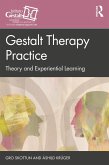The content in this book builds on the curriculum taught at the Norwegian Gestalt Institute University College (NGI). The material is divided into four main sections. In the first section, the theoretical basis for gestalt therapy is presented with references to gestalt psychology, field theory, phenomenology, and existential philosophy. In the later parts, central theoretical terms and practical models are discussed, such as the paradoxical theory of change, creative adjustment, self, contact, contact forms, awareness, polarities, and process models. Clinical examples illustrate the therapy form's emphasis on the relational meeting between therapist and client.
Detailed description of gestalt therapy theory from the time of the gestalt psychologists to today, with abundant examples from clinical practice, distinguishes this book from other texts. It will be of great value to therapists, coaches, and students of gestalt therapy.
Dieser Download kann aus rechtlichen Gründen nur mit Rechnungsadresse in A, B, BG, CY, CZ, D, DK, EW, E, FIN, F, GR, HR, H, IRL, I, LT, L, LR, M, NL, PL, P, R, S, SLO, SK ausgeliefert werden.
Frank Staemmler, Psychologist and Gestalt therapist, Würzburg
"In this important text, Gro Skottun and Åshild Krüger explore Gestalt's revolutionary core concepts and historical underpinnings as well as its practical applications. Gracefully interweaving case vignettes within each chapter, readers discover the how of Gestalt therapy as they assimilate information not only through thinking, but also through feeling. The book will have a wide and receptive audience: Gestalt training institutes, graduate classes for mental health, masters and doctoral students, and practitioners from a variety of modalities. I highly recommend it."
Ruella Frank, Founder and Director of the Center for Somatic Studies, New York
"I have great respect for this book, both for the huge amount of serious work that the authors have put in on it and for the didactic style that allows even non-specialists to understand what gestalt therapy is. This work is a testament to the true dialogical attitude that the Norwegian institute has always had, through their exchange with many international teachers (including myself). And I particularly appreciate that it begins with a description of gestalt theory as a main root of gestalt therapy, since this is for the most part neglected. I consider this book a very good tool for all gestalt therapy students."
Margherita Spagnuolo Lobb, Director Istituto di Gestalt HCC, Italy









